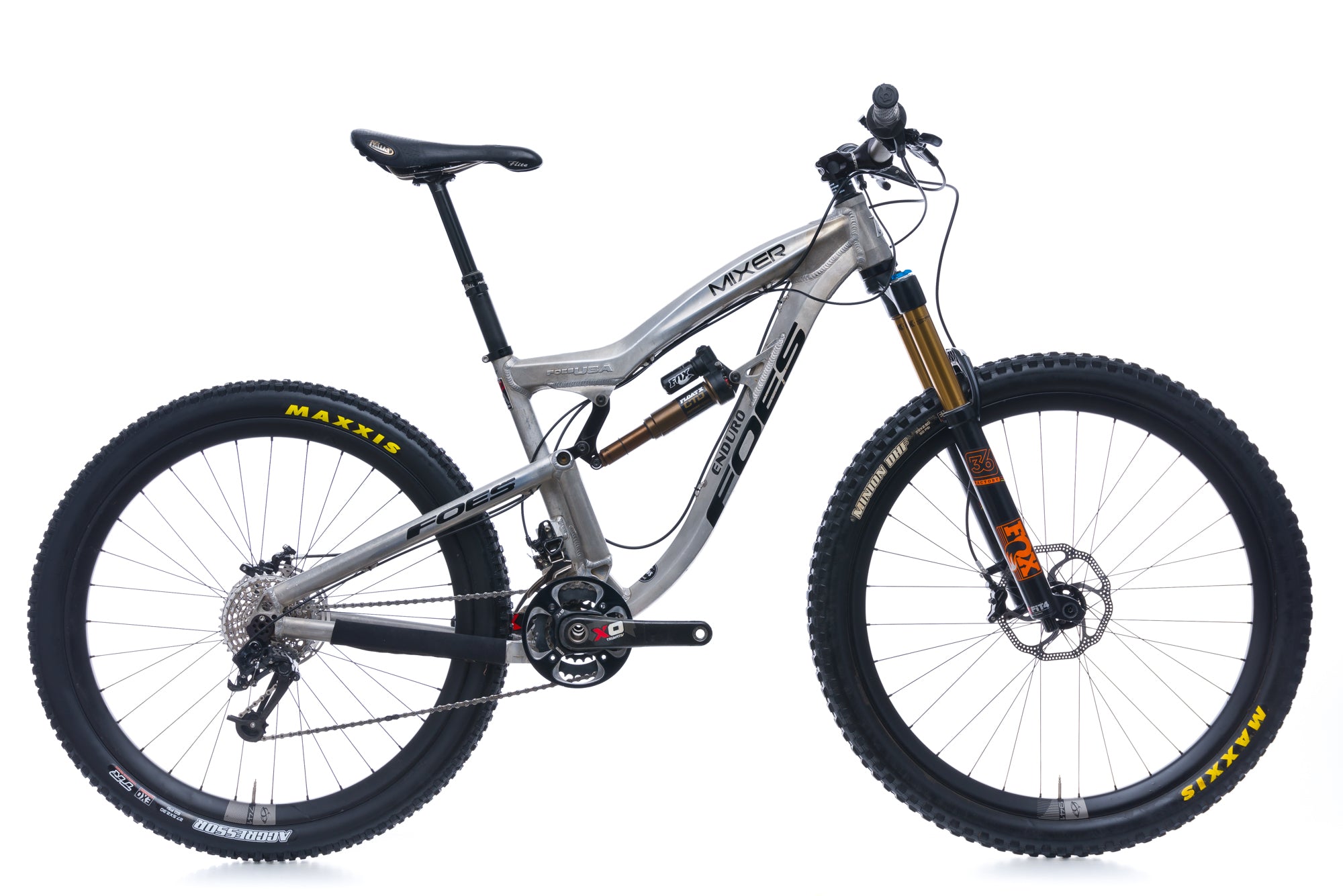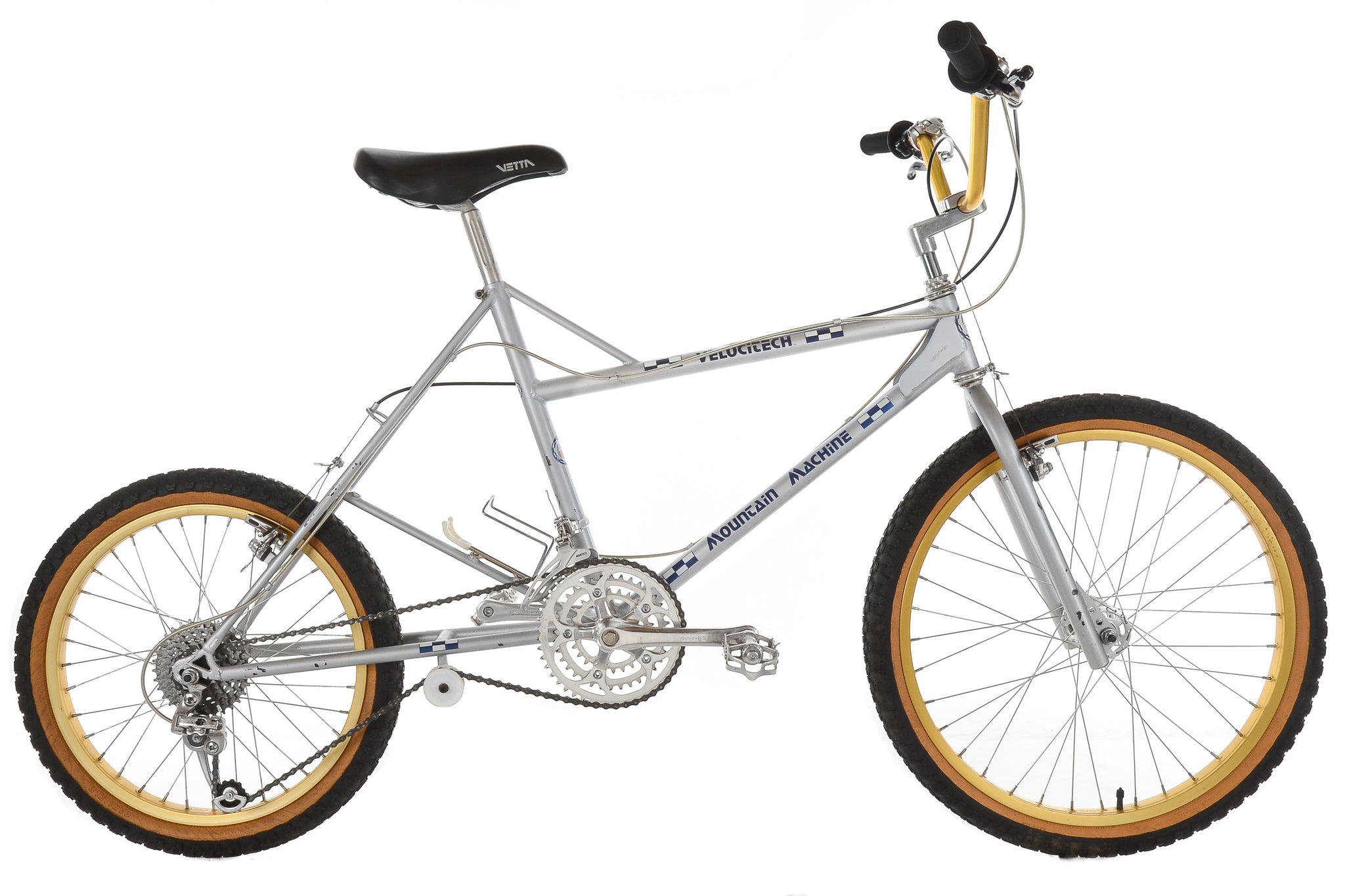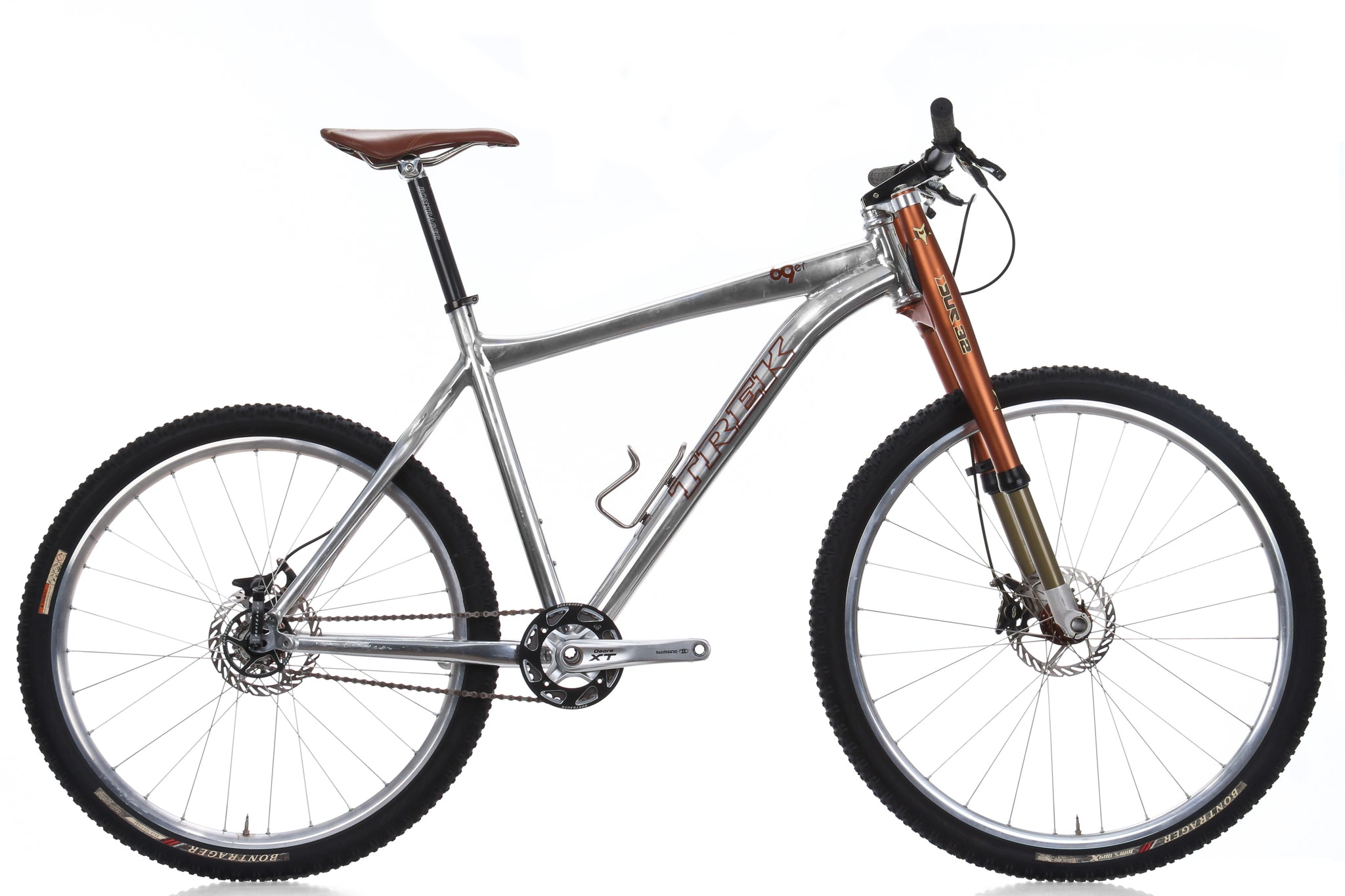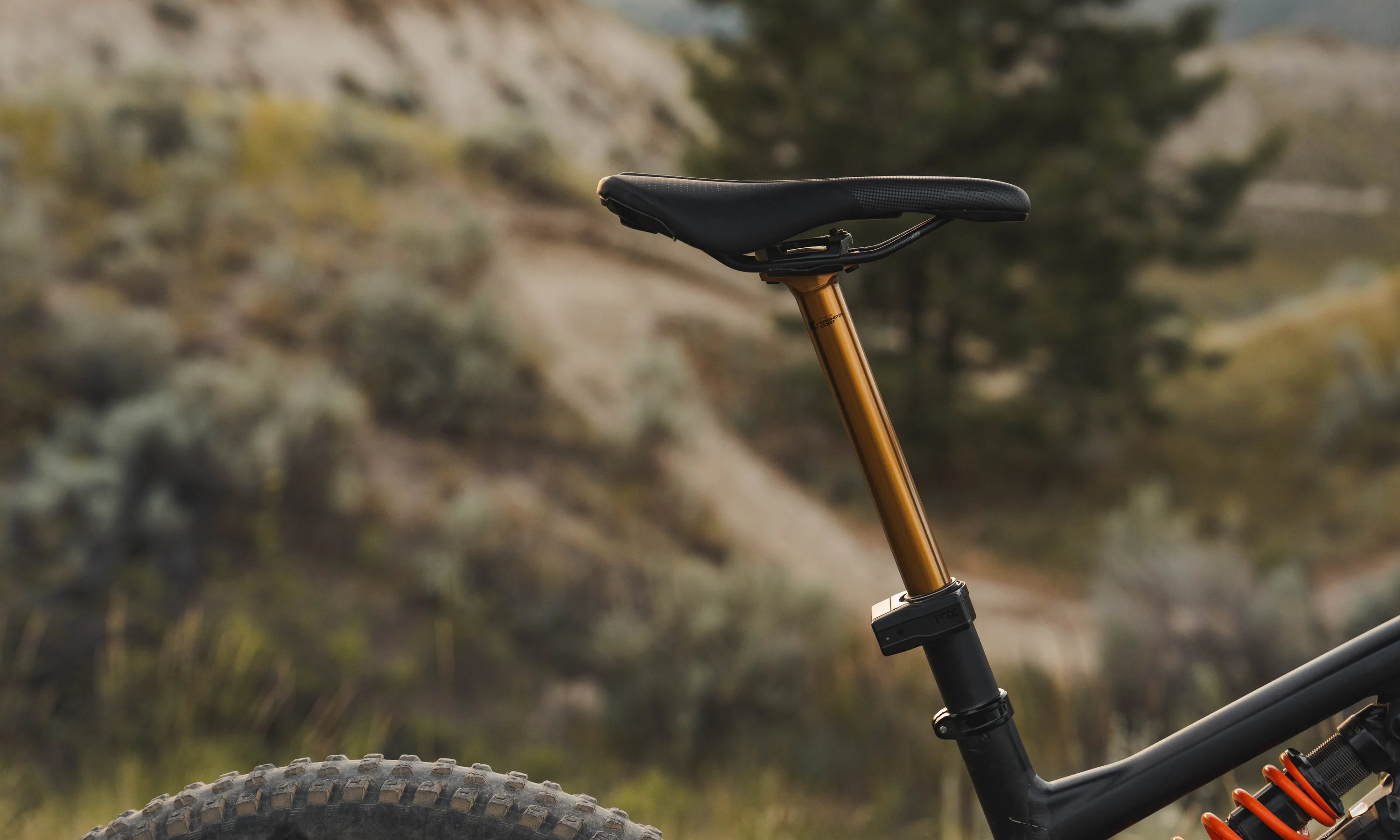One of the big talking points in pro downhill and enduro racing has been wheel size. In the fall of 2018, the UCI relaxed rules stating that riders in downhill and enduro events had to run the same size wheel front and rear. Racers immediately began experimenting with mountain bikes using a 29” front wheel paired with a 27.5” rear wheel, a combination commonly referred to as a “mullet” setup.
The mullet immediately found success at the highest levels of racing. In 2019, three-time UCI downhill world champion Loic Bruni won three World Cup downhill races and the World Cup Overall aboard his mullet Specialized Demo. The rising star of enduro Martin Maes won the opening three rounds of the Enduro World Series with a mullet GT Force.
 The new mulleted Santa Cruz Bronson 4 and Evil Insurgent MX. Photos courtesy Santa Cruz Bicycles and Evil Bikes.
The new mulleted Santa Cruz Bronson 4 and Evil Insurgent MX. Photos courtesy Santa Cruz Bicycles and Evil Bikes.
Over that last couple of years, plenty of curious riders have experimented with converting their bikes into mullet bikes, either by putting a 29” fork and front wheel on a 27.5" bike or putting a 27.5" rear wheel on a 29" bike. For 2021, influential mountain bike brands like Santa Cruz, Transition, and Evil are offering bikes like the Bronson, Patrol, and Insurgent in a mullet configuration from the factory.
Is this trend here to stay or destined to become part of The Pro's Closet's Museum? Should you ride a mullet bike? To learn more, we investigated the history of mixed-wheel-size bikes and considered the advantages and disadvantages. The short answer: It depends.
Coming Back in Style
 The Foes Mixer Enduro is a modern-day mullet bike designed to run mixed wheel sizes.
The Foes Mixer Enduro is a modern-day mullet bike designed to run mixed wheel sizes.
Though it may seem novel, this isn’t the first time the bike industry has played with mixed wheel sizes. Many astute Internet commenters immediately pointed out that the Foes Mixer is a mullet bike that's been in production for several years. Some may also remember the Specialized Big Hit from the early 2000s, which paired the 26” front wheel with a 24” rear.
 The Velocitech Mountain Machine was designed to be the ultimate weapon for hill-climb competitions. It used a 20" rear wheel to lower the center of gravity and take advantage of the torque provided by the smaller wheel.
The Velocitech Mountain Machine was designed to be the ultimate weapon for hill-climb competitions. It used a 20" rear wheel to lower the center of gravity and take advantage of the torque provided by the smaller wheel.
Our bike museum even features a mullet bike dating back to 1985. The Velocitech Mountain Machine pairs a 24” front wheel with a 20” rear to make the ultimate hill-climb machine.

One of the most eye-catching mullet bikes in our museum is a more recent experiment. Travis Brown’s 2007 Trek 69er hangs above the front desk of our shop and it utilizes the mullet concept to make a faster singlespeed race bike, featuring a 29” front wheel paired with a 26” rear wheel.
Mullet Theory Explained
The early 2000s were still early days for 29" wheels, and they had yet to receive the wide acceptance they enjoy today. The first 29” wheels were heavier and more flexible than their 26” counterparts. Big-wheeled 29ers had unrefined geometry that made riders feel perched atop the bike rather than “in” the bike. They were more difficult to handle, especially for shorter riders, since the larger wheels required more force to move around and provided less room to hang off the back. Critics felt that 29er bikes weren’t maneuverable, playful, or fun enough to ever usurp smaller wheels.
But despite criticism, 29" wheels have some obvious advantages. Larger wheels roll more easily over trail obstacles like rocks and roots. They also have a proportionally larger contact patch, which provides increased traction. The mullet bike was created as a way to exploit the benefits of big wheels while minimizing the downsides.
A larger wheel on the front provides that desirable increased roll-over and traction. This is more beneficial on the front of the bike because it increases a rider’s ability to hit obstacles at speed and maintain control. The smaller rear wheel is lighter, stiffer, and easier to accelerate. The smaller wheel also keeps the wheelbase short and makes the back of the bike more maneuverable and playful.
The mullet setup is an attempt to get the best of both worlds, and it seems to be highly effective, as evidenced by recent race results.
The 69er: Mixing Business with Pleasure
Let's take a closer look at the Trek 69er in our museum to see how the concept fared. Travis Brown is a mountain biking legend who represented the U.S. in the 2000 Olympic Games and in numerous UCI world championships. He’s also a two-time singlespeed world champion, so you know he's a little crazy.
Ever the innovator, Brown has continued experimenting with new technology after retireing from professional racing and currently works in mountain bike product development for Trek. He was drawn to the big 29” wheel early on and believed in the benefits it could provide. He designed the mulleted Trek 69er to be the ultimate singlespeed weapon.
The 69er came about before the popularization of 27.5” wheels, so it uses a 26” wheel on the back. With the 29” front wheel, the 26" rear looks almost comically small in comparison. But it is significantly stiffer and easier to spin up. This can be hugely advantageous on a singlespeed bike, where you often have no choice but to muscle the bike up to speed in a hard gear.

The fork Brown chose is a cult classic, the Maverick DUC 32. This DUC 32 was custom-made for the 69er. It has 100mm of travel and a moto-inspired, dual-crown, inverted design with the stanchions at the bottom. A massive 24mm thru-axle further improves stiffness. The head tube was designed shorter to keep the handlebar stack low. The frame is made from hydroformed aluminum with wide tubes and a thick wishbone seat stay. This made the 69er incredibly stiff and many reviewers referred to the ride quality as “brutal.”
The 29” wheel paired with the stiff Maverick DUC 32 fork and slack (for the time) 69-degree headtube angle allowed the front end to plow through trail features. The 26” rear wheel, in comparison, felt incredibly responsive and playful. Because the rear end was so short and stiff, it had a tendency to dance around when following the big front wheel through rough terrain. It truly was one of the wild examples of a mullet bike — all business in the front, with tons of party in the back.
All of this added up to a bike that was fast and lots of fun, but it did not last in a crowded and evolving mountain bike market. Production ended after only a few years. Like the hairstyle and the mullet bikes that came before it, it became unfashionable as more clean-cut, matching-wheel-size bikes became the norm.
Is a Mullet Bike Right for You?
History likes to repeat itself and mixed-wheel-size bikes have slowly been coming back into style. Today, Mullet bikes have new advantages working in their favor like modern geometry, lighter and stiffer 29” wheels, and the option of a 27.5” rear wheel which is closer to a 29” wheel in size and performance.
Enduro and downhill riders stand to gain the most from a mullet set-up. While 29"-wheeled are quickly becoming the norm in gravity racing, there are still plenty of riders who prefer the ride characteristics of 27.5" wheels. Because the rear wheel has the most influence on a rider's ability to toss the bike around, it may be the ideal solution for riders who want more maneuverability without sacrificing the competitive advantage of more traction and rollover at the front wheel.
It's unlikely that turning a modern XC race bike into a mullet will improve performance as it will affect the geometry in a way that negatively impacts climbing. The 29er has firmly established itself as the dominant wheel size in the XC world, front and rear.
You can expect more brands to join Santa Cruz, Transition, and Evil in offering stock bikes with mixed wheels. For riders who don't want to buy a new mountain bike, trying a mullet will require swapping some parts.
In general, putting a 29" fork and front wheel on a 27.5"-wheeled bike will raise the front end. This slackens the head angle (which is beneficial for steep trails), increases stack (something that can bother riders who need lower handlebars), and raises the bottom bracket.
Putting a 27.5" wheel in the back of a 29er bike is also an option, but keep in mind that it lowers the bottom bracket, increasing the risk of pedal strikes. Plus, the chain stays may be longer than desired, since they were meant for a 29" wheel. One of the benefits of a mullet bike is shorter chain stays, which usually improves handling. That's why many brands are choosing to convert their 27.5"-wheeled models. Some newer 29" bikes like the Specialized Stumpjumper Evo and Enduro employ geometry flip chips to alter geometry and give riders the option of swapping to a smaller 27.5" rear wheel.
 Freerider Veronique Sandler shredding a mullet bike. Photo courtesy Santa Cruz Bicycles.
Freerider Veronique Sandler shredding a mullet bike. Photo courtesy Santa Cruz Bicycles.
Smaller riders or riders with shorter legs are likely to benefit from a mullet bike. Any rider who has struggled to feel comfortable maneuvering a 29er bike on steep or technical trails may find that offsetting a 29" front wheel with a smaller rear wheel will make a bike feel more nimble, smaller, and easier to handle.
Riders with 27.5" bikes who are curious about 29" wheels but don't want to buy a new bike or riders who want to maintain the playfulness of their 27.5" bike but want to improve front end roll-over and traction can also benefit from a mullet set-up.
We'll have to wait and see if the mullet bike concept sticks this time around. Or if they fall by the wayside like the plus-bike craze a few years ago. No doubt though, bikes like the Velocitech Mountain Machine and the Trek 69er won't be the last famous mullet bikes to end up in our museum collection.

























